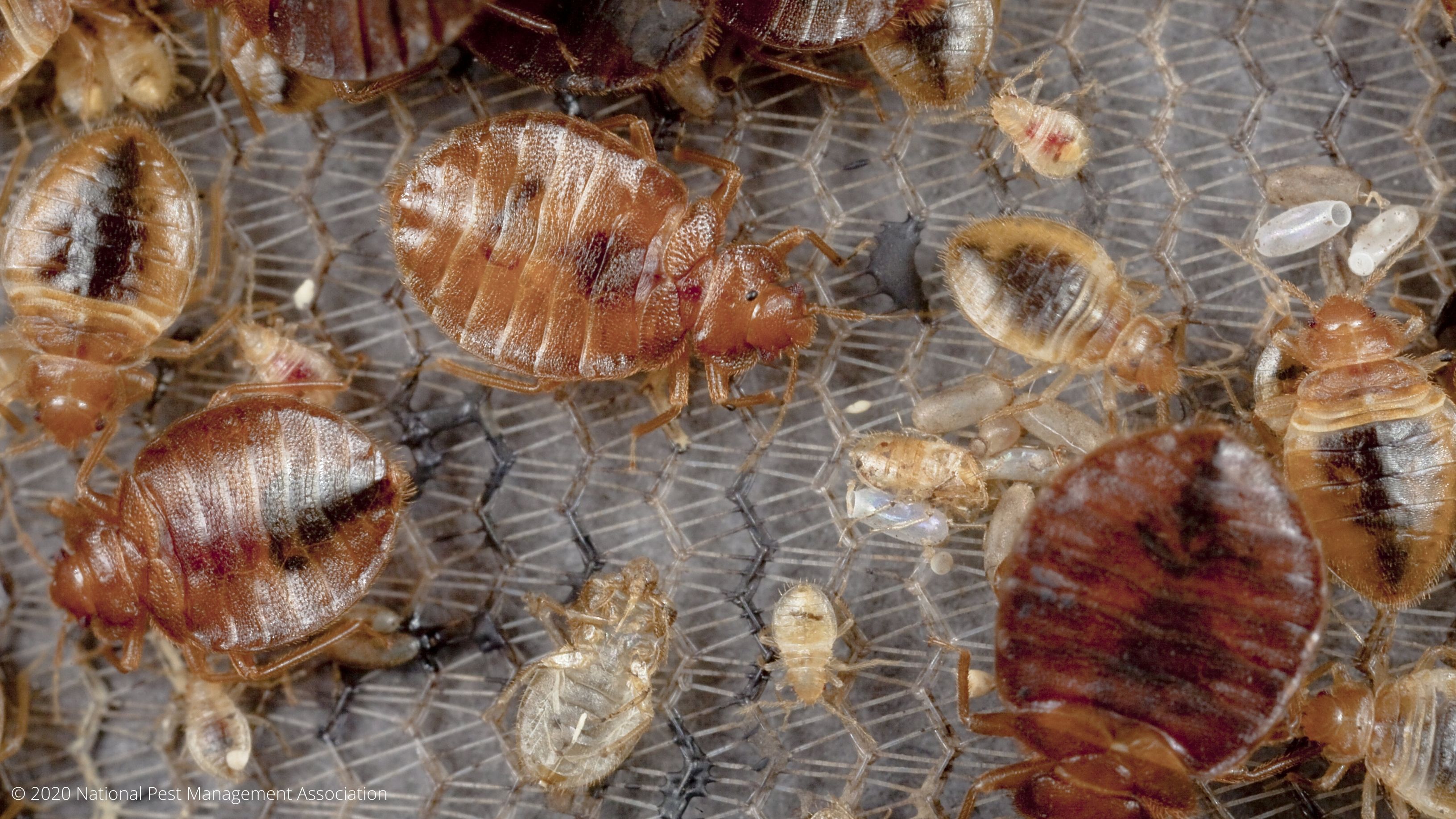
“Good night. Sleep tight. Don’t let the bedbugs bite” is a rhyme with debated origin that takes most adults back to childhood. But unfortunately, according to the U.S. Environmental Protection Agency (EPA), bed bug infestations are on the rise here in the U.S., largely due to an increase in travel. Other contributing factors include this insect’s increased resistance to pesticides and ineffective pest control practices paired with a lack of knowledge about how to prevent bug bug infestation. With this in mind, we put together this comprehensive guide to bed bugs to help homeowners and business owners in South Georgia and North Florida stay informed and know where to turn for help.
What do bed bugs look like?
Adult bed bugs are small, wingless flat insects that are reddish-brown in color. Before they feed, they are about the size of a small apple seed. They feed on the blood of people and animals, which they do while we sleep. Bedbug eggs are white, curved and about a quarter inch long. Newly hatched bed bugs are straw colored or colorless. According to the Georgia Department of Public Health (DPH), people often confuse them with ticks or cockroaches.
4 Common Myths about Bed Bugs
Myth #1: Bed bugs can fly
Reality: Bed bugs cannot fly, and they do not jump. However, they can crawl very fast over ceilings, floors, walls, and other surfaces. They can come into your home from other infested areas from used furniture or by attaching themselves to items placed on soft or upholstered surfaces such as backpacks, purses or luggage.
Myth #2: Bed bugs spread disease
Reality: While bed bugs feed on blood, they are not known to spread any diseases to humans. They can, however, be an annoyance because their bites can cause itching, lack of sleep or allergic reactions. Bite marks are very similar to flea or mosquito bites.
Myth #3: Bed bugs only live in dirty places
Reality: The Centers for Disease Control and Prevention (CDC) says that bed bugs can be found anywhere from five-star hotels and resorts to clean homes and living spaces. They travel easily between rooms in multi-unit buildings, such as apartment complexes and hotels.
Myth #4: Do-it-yourself (DIY) remedies can kill or get rid of bed bugs
Reality: DIY remedies alone cannot kill or get rid of bed bugs in your home or business. This means that while using alcohol, rubbing alcohol, vinegar, bleach, Lysol (or other similar cleaning and disinfecting products) can aid in killing bed bugs, these remedies alone won’t work as an effective treatment for bed bug infestation. And in certain cases, the safety and damage risks of using these DIY remedies outweigh any potential benefits.
How do you know if you have bed bugs?
Bed bugs are small and hard to find. They move fast, and they are active mostly at night. This means they can be very difficult to identify or detect. Signs of a bed bug infestation are dark spots (dried bed bug excrement) on mattresses or bedding, wallpaper, nightstands and even electrical outlets in the wall. You may also notice the cast skins left behind as the bed bug grows.
How to get rid of bed bugs
No one wants to have their home or business infested by bed bugs, but if you do have them, the use of pesticides is only part of the recommended strategy for getting rid of them. According to the EPA, bed bug populations in certain parts of the country can develop resistance to certain pesticides, and they recommend reaching out to qualified pest management professionals to help get rid of bed bugs in your home or business. Dixon Pest Services specializes in bed bug treatment in South Georgia and North Florida. For a no-obligation estimate, or to schedule a service appointment, contact us today!